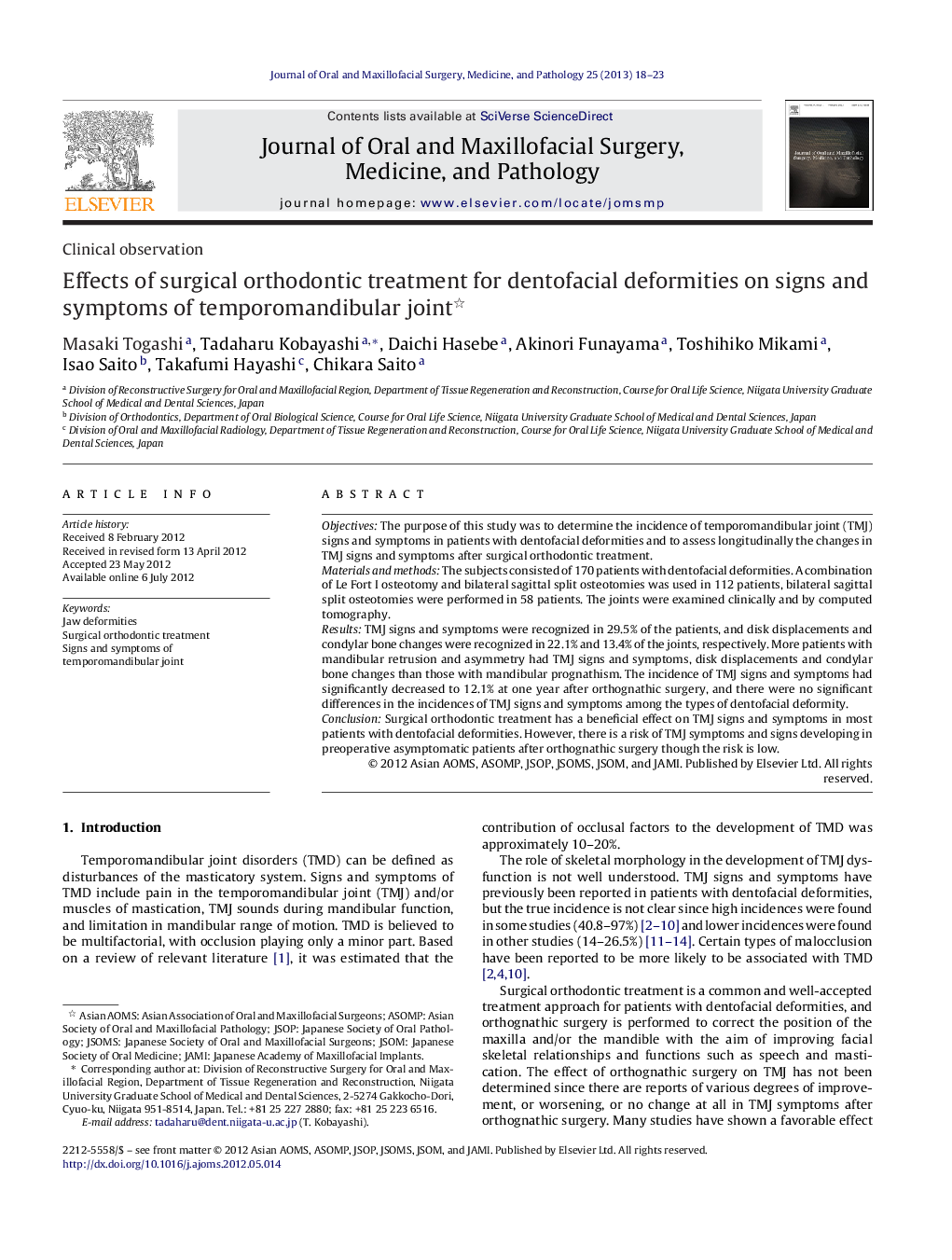| Article ID | Journal | Published Year | Pages | File Type |
|---|---|---|---|---|
| 3159653 | Journal of Oral and Maxillofacial Surgery, Medicine, and Pathology | 2013 | 6 Pages |
ObjectivesThe purpose of this study was to determine the incidence of temporomandibular joint (TMJ) signs and symptoms in patients with dentofacial deformities and to assess longitudinally the changes in TMJ signs and symptoms after surgical orthodontic treatment.Materials and methodsThe subjects consisted of 170 patients with dentofacial deformities. A combination of Le Fort I osteotomy and bilateral sagittal split osteotomies was used in 112 patients, bilateral sagittal split osteotomies were performed in 58 patients. The joints were examined clinically and by computed tomography.ResultsTMJ signs and symptoms were recognized in 29.5% of the patients, and disk displacements and condylar bone changes were recognized in 22.1% and 13.4% of the joints, respectively. More patients with mandibular retrusion and asymmetry had TMJ signs and symptoms, disk displacements and condylar bone changes than those with mandibular prognathism. The incidence of TMJ signs and symptoms had significantly decreased to 12.1% at one year after orthognathic surgery, and there were no significant differences in the incidences of TMJ signs and symptoms among the types of dentofacial deformity.ConclusionSurgical orthodontic treatment has a beneficial effect on TMJ signs and symptoms in most patients with dentofacial deformities. However, there is a risk of TMJ symptoms and signs developing in preoperative asymptomatic patients after orthognathic surgery though the risk is low.
